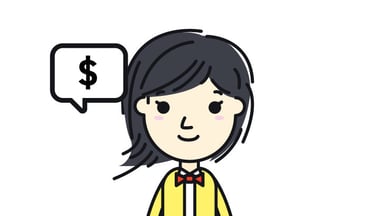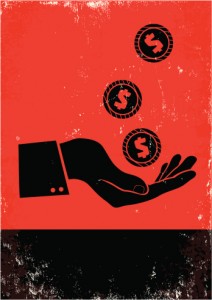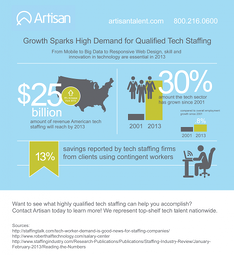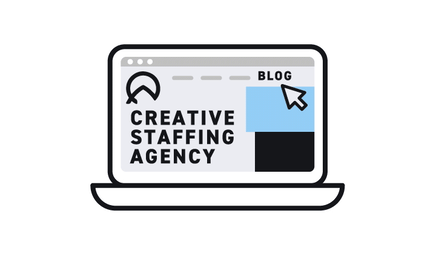Freelancing contract jobs are definitely the new normal. That’s because the work world has shifted into an on-demand employment model that mirrors our on-demand digital lifestyles. We can work anywhere now, and we do. Freelancers can be found in every coffee shop and nerdy hangout space in our nation, and of course, at home on the couch.
According to the Freelancers Union, there were 57 million freelancers in 2017. That’s an increase of 30% from the previous year and a serious chunk of the American workforce. In 2020, the number is predicted to rise to 43% of the workforce, according to CNN. By 2027, the Freelancers Union says half of the American workforce will be a contract worker. That’s a lot of Americans that will have some sort of side or full-time freelance gig.
However, CNN says that 20 million of the 55 million freelancers take on contract roles because they can’t find a traditional full-time role. Does this mean freelancing doesn’t qualify as a real job and, instead, is just a fallback when the traditional job falls through?
From Uber drivers to contract teachers, freelancers are now in just about every industry imaginable. But does this increasing workforce population experience their work as a “real" job? What defines a real job in today’s freelance-driven economy?
What Are the Elements of a Real Job, Anyway?
/Millennials3b.jpg?width=720&name=Millennials3b.jpg)
Don’t judge people who are freelancers.
Imagine a conversation between anyone over the age of 65 and a millennial or Gen Z-er:
Baby boomer: “What do you do?”
Millennial: “I’m a freelance creative.”
Baby boomer: “What does that mean?”
Millennial: “I work contract gigs at home on my couch.”
Baby boomer, frowning: “But how is that a real job?”
Millennial: “Uh, I get paid?”
Baby boomer: “But what about benefits?”
Contract writer Megan Reynolds recounts a similar conversation with her parents when she lost her “real job” and started freelancing full-time. In her Billfold article, Reynolds defines a real job as one with consequences attached — if you don’t show up for a couple of weeks, someone notices.
Is this what actually makes a job real no matter what tax status a worker is filing under?
Oddly, this brings up a rabbit story.
In the children’s book The Velveteen Rabbit, the toy rabbit asks the toy horse what makes it “real.” The toy horse answers that it is a process that just happens not all at once, but over time:
"What is REAL?" asked the Rabbit one day, when they were lying side by side near the nursery fender before Nana came to tidy the room. "Does it mean having things that buzz inside you and a stick-out handle?"
"Real isn't how you are made," said the Skin Horse. "It's a thing that happens to you. When a child loves you for a long, long time, not just to play with, but REALLY loves you, then you become Real."
"Does it hurt?" asked the Rabbit. "Sometimes," said the Skin Horse, for he was always truthful. "When you are Real you don't mind being hurt."
How does a sweet little children’s book relate to the realness of a “real” job?
A job is “real” because we spend the time making it so. We don’t have to love it, certainly, for it to pay the bills. But we spend the time devoting ourselves to the work, and hope at the end of our labors that the contract between worker and employee and worker and payment end up fulfilling our need for money.
Sometimes a real job can be painful, but ordinarily we don’t mind the pain when the paycheck comes in. Sometimes we even love it, like our favorite stuffed bunny.
What Makes Freelancing Real?
/GenZ_Jobs.jpg?width=720&name=GenZ_Jobs.jpg)
Megan Reynolds says what makes freelancing real is that it can wear you out:
If what you do makes you tired by the end of the day and makes you want to lay face down on the floor for an hour or so, then it’s work. If the only thing you can think about after your work is closing a computer and reading a book, then that’s work. If you need one solid day to recover,
alone and silent, sitting outside in the sun, it’s work. At the end of the day, if you can pay your bills and are happy, then you’re doing just fine.
But if that’s the only definition, let’s think for a second about what defines any job: It’s money. We work for money.
A job is a social construct, a contract between client/employer and the person doing the work. If you’re driving for Lyft on the weekends, you expect to be paid. That’s the promise and that’s what gets everyone out of bed or away from the video game console long enough to work. We work. We earn money. It’s that simple. That’s what makes a job, a job.
More than half of the freelancers surveyed in one report said they wouldn’t return to a traditional role, even if one were offered. Other stats from that report back up the idea that freelancing is a real job include:
- 83% invest in marketing their business online
- 54% set aside money in savings
- 60% have life insurance
- Workers aged 35 and older are actually less likely to return to a full-time traditional role once freelancing takes hold
These numbers are all decent indicators that freelancing is lucrative, rewarding, and we’re pretty sure, “real.”
Pros of Freelancing
/Pros_Cons(alt).jpg?width=720&name=Pros_Cons(alt).jpg)
Not every industry has freelancers, but many have the potential to have freelancers. Have you seen a freelance cop? Probably not, but there are freelance contract lawyers, traveling temp nurses, and even doctors who get beamed in occasionally to help hospitals.
Over the past five years, a plethora of platforms have sprung up for people to pick up freelance gigs. This has allowed a self-service economy in the freelance space, potentially netting thousands of dollars for the contract worker.
Freelancers can use these tools to reap the benefits of the freelancing lifestyle, including:
- The stability of having multiple income streams
- Schedule flexibility to work whenever you want or need to
- Pride in entrepreneurship
- Unlimited earning potential
- Work wherever you want
- Potentially zero commuting costs
- You can fire your most annoying clients (true story)
- Skip office politics and annual performance reviews
- Casual dress lifestyle, potentially
- For some freelance roles, travel is a bonus
- Variety in projects and tasks
Part of the problem here is that we call this work “gigs,” and that probably makes it seem less real. The latest poll from the Freelancers Union suggests that these workers prefer to call this work something other than a “gig.”
Is it time to just call freelancing “work”?
It’s true there are still some stigmas and assumptions tied to the freelance economy. For example, the imaginary conversation held earlier in this blog between a millennial and a baby boomer assumes that younger people are more likely to freelance than older people.
However, according to the cool people at AARP, these stereotypes are wildly wrong:
- 49% of the freelance population today is made up of baby boomers
- 33% are Gen X-ers
- 18% are millennials
80% of these older workers say they are happy being their own boss. AARP reports that boomers with traditional jobs have lower levels of job satisfaction. AARP also says that the older American workforce is increasingly turning to contract work to supplement incomes.
However, like any job, there are also drawbacks to freelancing. Come to think of it, the fact that freelancing has pros and cons makes it like any other traditional job. So, what is the downside of the “free” in freelancing?
Freelancing Cons
/Hiring%20Project%20Based%20Creative%20Talent.jpg?width=720&name=Hiring%20Project%20Based%20Creative%20Talent.jpg)
The Freelancers Union says income predictability is the challenge of the freelance lifestyle. But that’s only part of it. Last year, Jia Tolentino wrote an intense article in The New Yorker on the gig economy, calling it out as having the “freedom to work yourself to death.” Her article illustrated the second “con” about freelancing, which is that if freelancers don’t work, they simply don’t get paid. Freelancers can take a day off, but they don’t typically receive vacation or other types of benefits found in traditional work.
Some of the other challenges of freelancing include:
- Social isolation
- The constant search for new roles
- Managing the complexities of several jobs simultaneously (this means, instead of just one boss, a freelancer has several)
- You’re on your own for health insurance
- Unemployment benefits don’t exist
- Estimated tax payments
One of the struggles faced by freelancers is that, while full-time freelancing may consist of one or two clients, it often means juggling several clients simultaneously. This can create a feeling of instability, chaos, and burnout in the freelance worker. Staying focused is imperative.
Sometimes, full-time roles let a person zone out and look at cat videos when the boss’s back is turned. While you can still do this as a freelancer, keep in mind that the old cliché “time is money” is the real deal when working without the safety net of a full-time role. But Inc. says 68% of the American workforce is disengaged. Could those workers, living so quietly as a cog in the wheel of full-time employment, be secretly dreaming of a “real" job? Maybe, for them, a real job is freelancing.
Freelancing vs. One Full-Time Job
/Hiring_Image1a.jpg?width=720&name=Hiring_Image1a.jpg)
It seems clear that millions of people define their idea of a real job as freelance contracting. It’s likely that millions more yearn for the flexibility of contract jobs. But there are also freelancers yearning for the stability of a full-time salary. Deciding what type of job is “real” and right is an individualized process based on the needs, wants, and priorities of the worker and their family. There are positives and negatives for freelancing as well as full-time employment.
Full-time jobs are relatively steady; workers can count on regular paychecks, a predictable income, and the potential for automatic salary increases. Most full-time roles also have paid time off and insurance, as well as other perks. However, most employers reside in “hire at will” states. This means they are also “fire at will” states. The truth today is that anything can happen in this crazy volatile job market. This is a good argument for at least using freelancing to supplement the existing day job. Yes, the world is uncertain. Freelancing lets workers have more control over their lives.
Freelancing may be more hand-to-mouth, adding a scramble to the concept of working that makes some people (including freelancers) nervous. But, to a certain extent, this entrepreneurial lifestyle is hugely attractive. Hate the job? Find another. In freelancing, it’s easier to pick up more work or drop contracts based on whether the work is interesting, the employer is nice, or whatever criterion you’ve defined.
A freelancer is as in control of their job setting as anyone can possibly be. The schedule flexibility is a huge attraction. These roles frequently pay higher than full-time jobs, but be careful; make those quarterly estimated tax payments or suffer the wrath of the IRS — or work with a staffing agency who will do it for you.
The bottom line right now is that the American worker has more choices for employment than perhaps at any other time in the history of our country. Whatever the arrangement selected, it’s clear that there are options for paying the rent that include all kinds of real jobs in full-time, part-time, or contract roles.
How to Find Your Next “Real Job”
/Artisan%20People.jpg?width=720&name=Artisan%20People.jpg)
Artisan Talent helps creatives find work and matches employers with the best talent in the market. Whether it’s freelancing or permanent full-time, we help link great employees with great employers. No matter what your goal, if your job isn’t feeling real enough, we can help. Contact us today.




